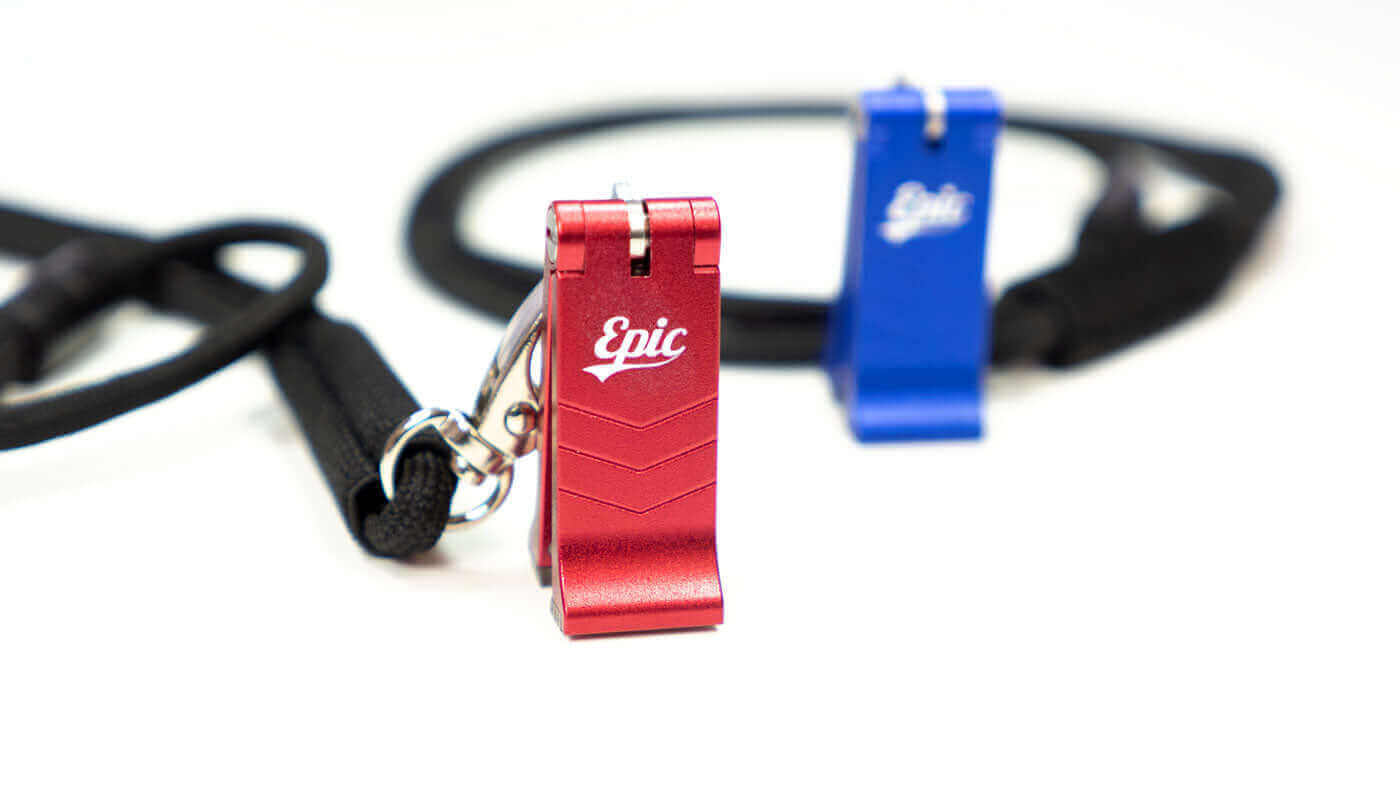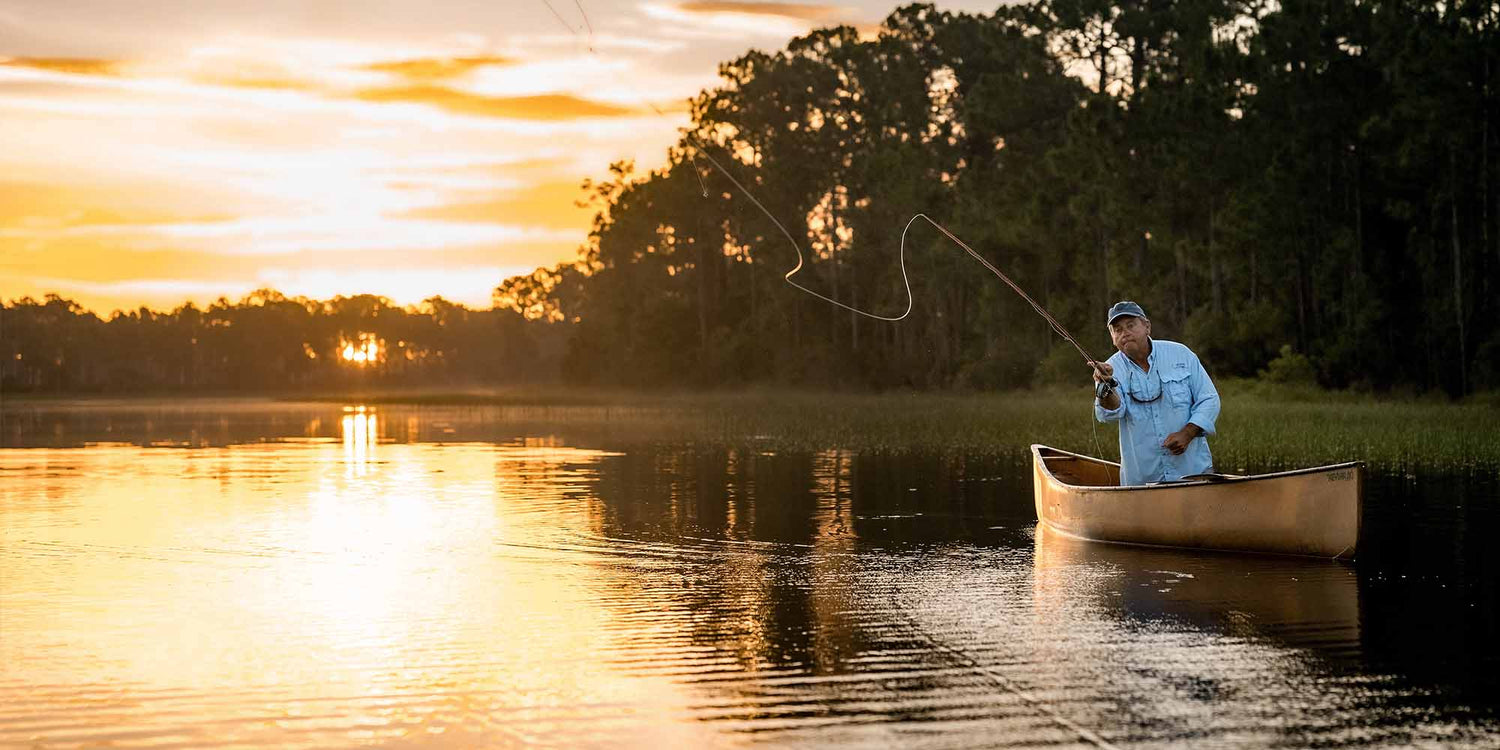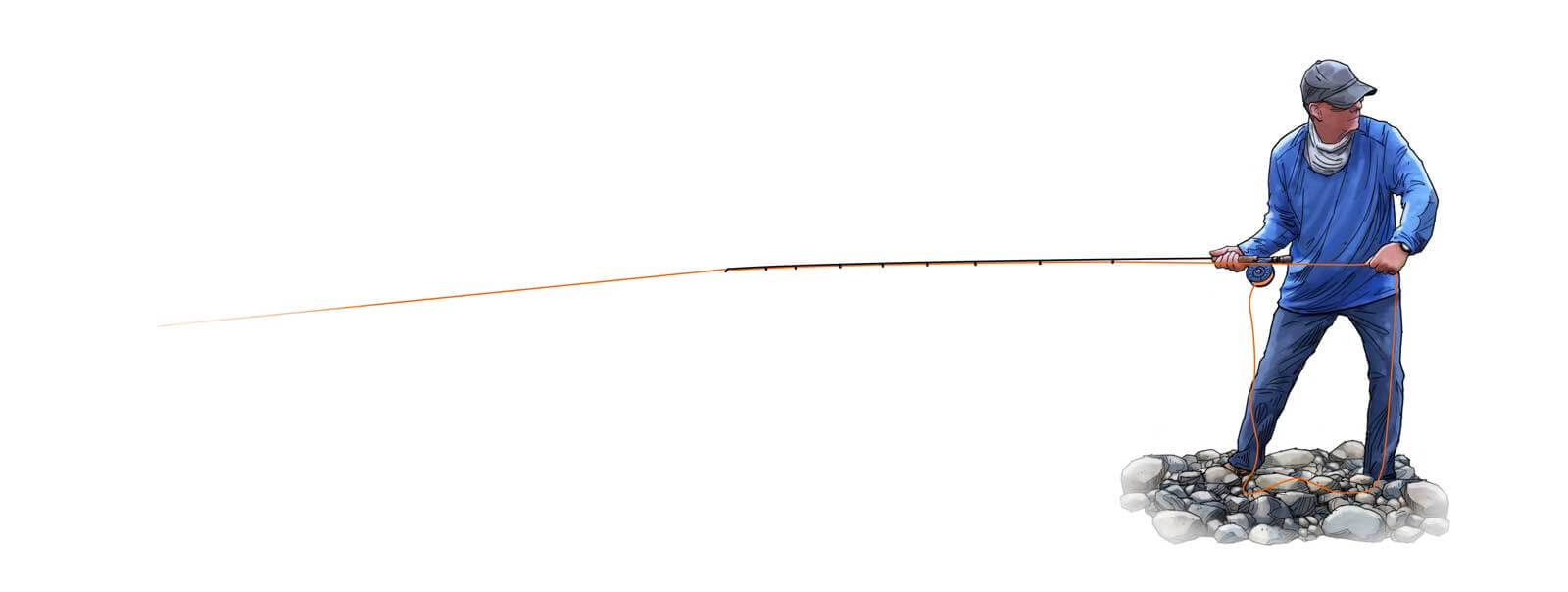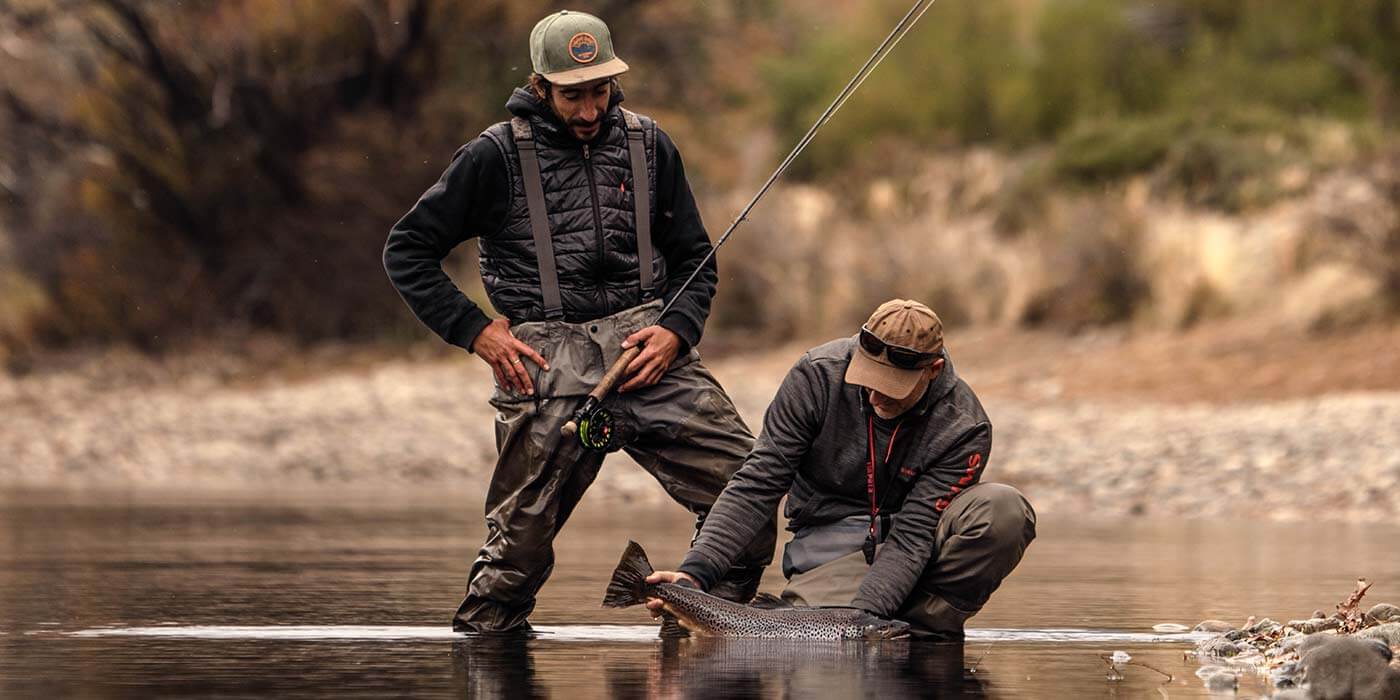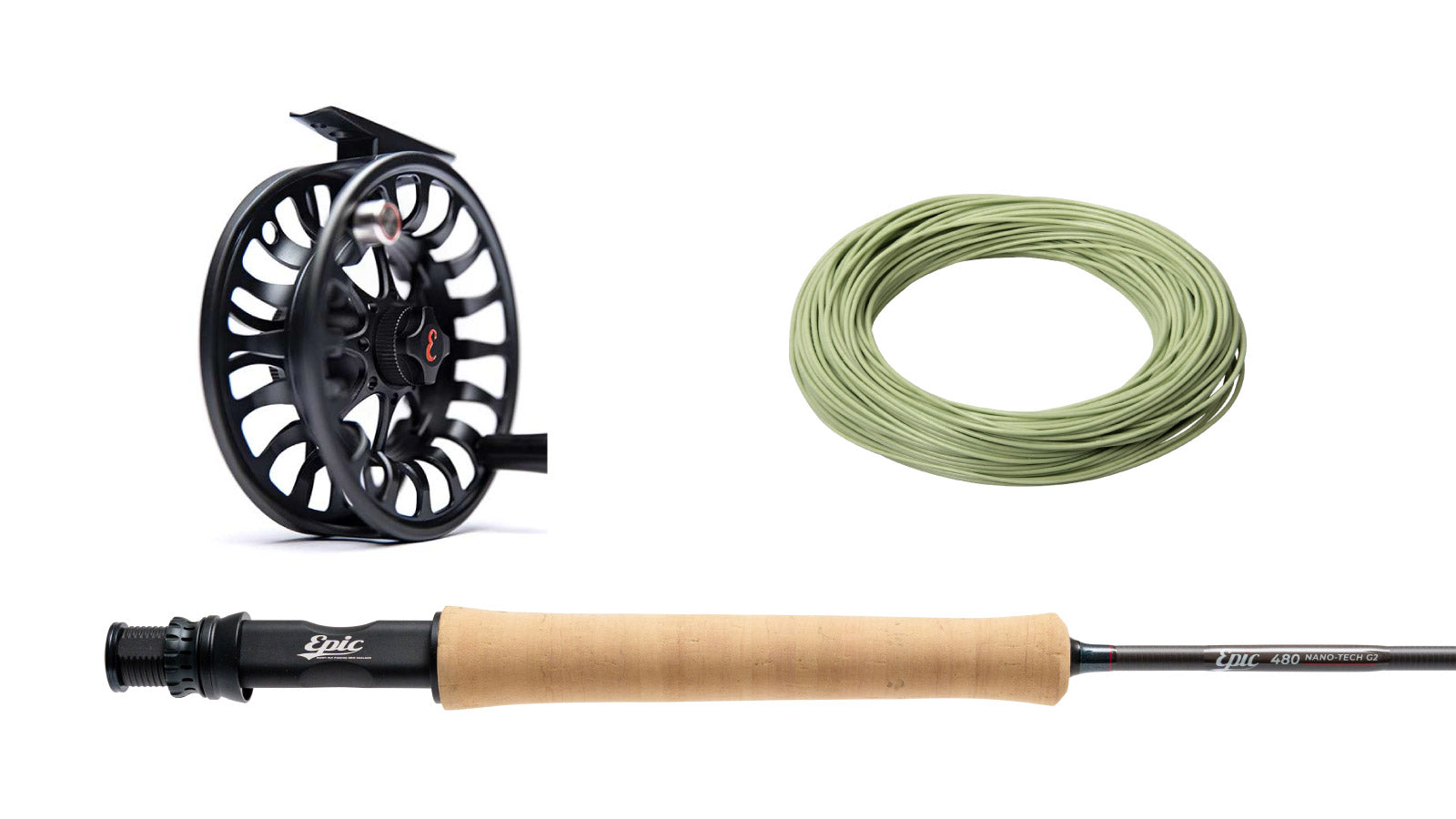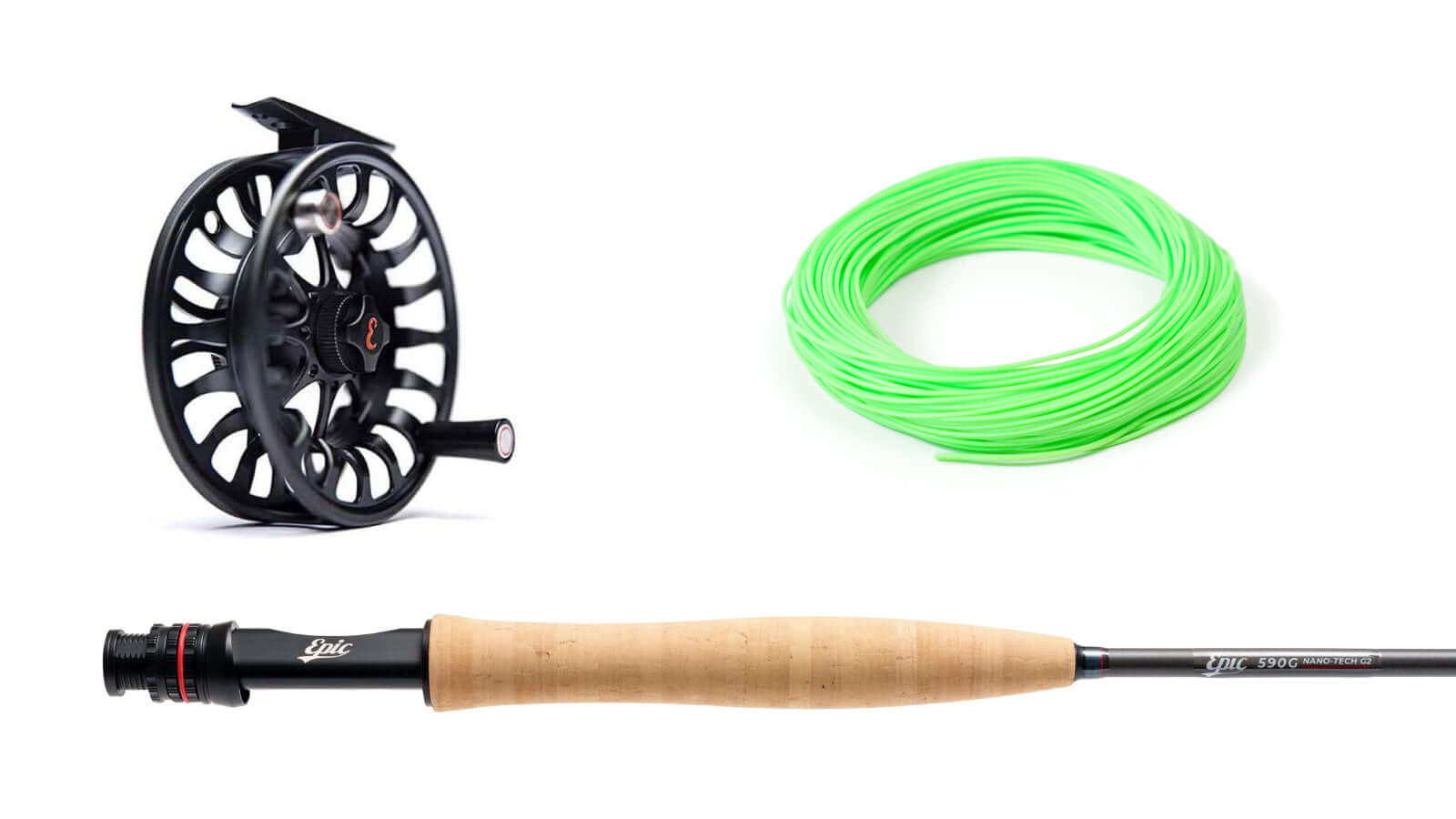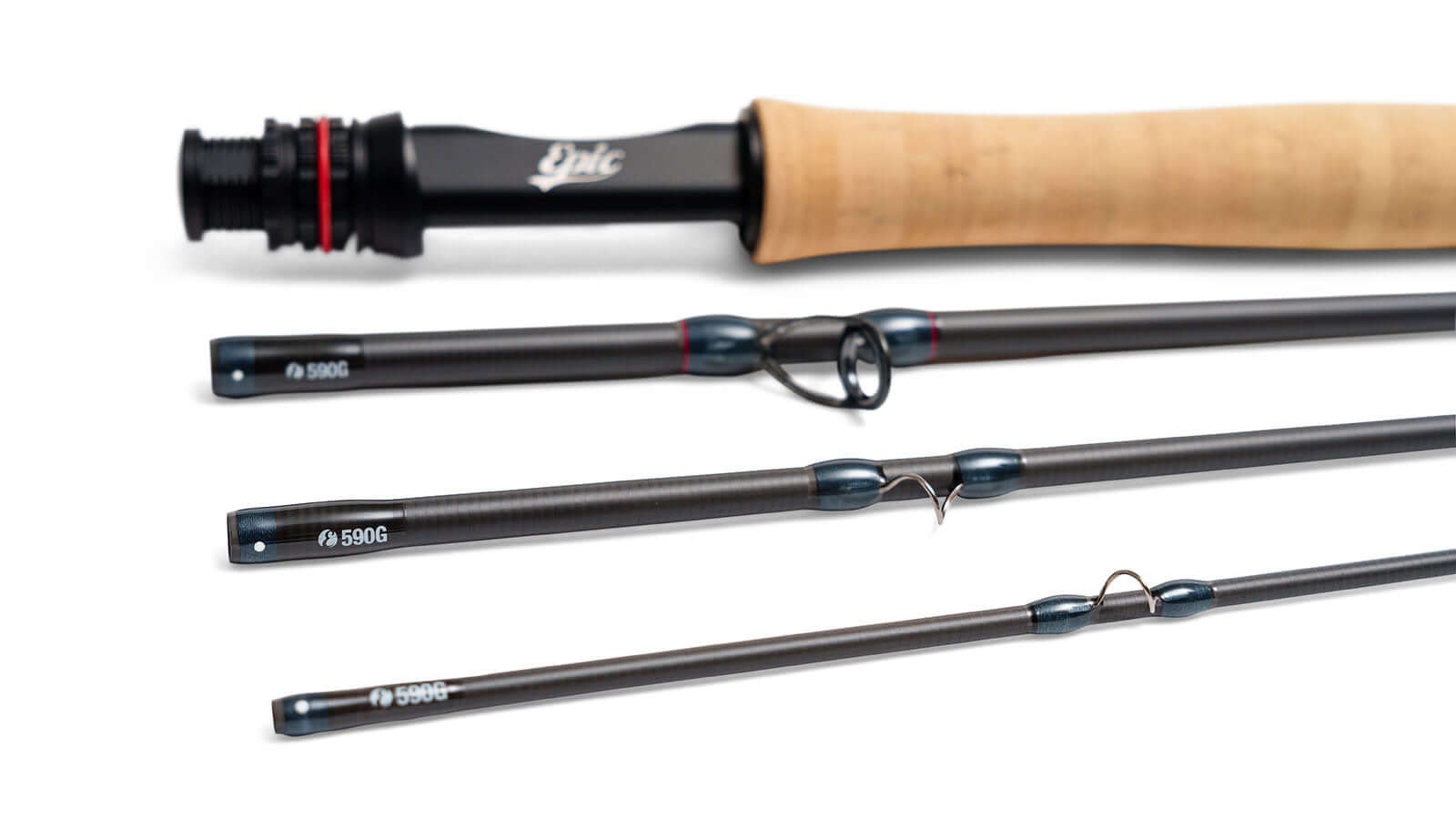“You’ve found a way to make the hardest way to fish even harder,” my dad told me 45 years ago. Maybe, but nothing has brought me more satisfaction over those years than fly fishing from a canoe.
Truthfully, I really can’t decide which I enjoy more, fly casting or paddling. Both are an elegant functionality. The glide of a properly paddled canoe, when paired with a graceful fly cast presentation, is balance at its finest.
A canoe is more agile than any other type of boat. It can change directions just a few degrees or rotate in place. It moves sideways and backwards and glides silently through the water. Fly fishing by canoe is a state of mind, and a very good way to catch fish. Here are a few tips to help you find that remarkable experience.
Essentials
A PFD (personal floatation device) and whistle are essential safety equipment, and are usually required by law. Buy a PFD that is comfortable and get used to wearing it. A folding knife that can be opened with one hand stays clipped to my PFD. I’ve found it to be handy and could be life-saving in emergency situations. The lines attached to either end of the canoe are called “painters.” They help manage and secure the canoe. The painter should be at least the length of the canoe. While floating poly-rope works well, I use one of my transport tie-down straps. A long-handled landing net is useful when fishing by canoe, eliminating the need to lean too far over when landing fish. In addition, a boat sponge will come in handy to keep the deck dry.
Paddle Selection
There is a difference, in my mind, between paddling for tripping /touring and paddling for fly fishing.
While touring, only part of the blade should be under the surface for efficiency of paddling, but when fly fishing, much of your time will be spent holding and repositioning the canoe. So, the deeper the blade goes, the greater the leverage. The most common stroke that I use is called the “Indian stroke,’ a technique where the paddle blade stays quietly submerged throughout the stroke cycle. A straight-shaft “Beavertail” style paddle is best for this stroke.
There are several ways to determine the paddle length that is most efficient for you. I would disregard the charts and get the longest canoe paddle that you can find. At 5’8”, I use a 63-inch paddle, one that would be appropriate for a much taller paddler. The reason is leverage.
Another helpful piece of equipment is a double-blade canoe/kayak paddle. I chose the longest one that I could find (102 inches). Look for one that has non-curved blades, and preferably all wood. Although heavier, wood is more durable. You will find yourself using your paddle as a push pole, anchor and brace. In addition, the extended length will turn you on a dime. In windy conditions, a double-blade will move you much more efficiently and help you cover more distance-especially if you are paddling for two.

Rod Choice
I strongly recommend a rod that will fit comfortably inside the canoe. A rod length of 7.5’ to 8’ works best for me in my 15’ craft. Keeping the rod tip inside the canoe will keep the rod and line from catching on the bow or grabbing the snags that you are likely to find in twisty creeks. I also find that a shorter rod is easier to manipulate under overhanging trees and in tight quarters. I fish mostly floating lines and top water, or near-surface flies for Florida bass and panfish. The rod that I use most is an eight-foot five- weight fiberglass model by Epic Fly Rods. In stronger current or saltwater, I’ll opt for heavier tackle.
Scale It Down
Lighter equipment and less stuff in general will enhance your experience. Find the minimalist in you. Scale down your boat, your tackle, and even your expectations. Not that you can’t catch trophy fish by canoe, but that’s not the point. Let’s say you were to catch a 15-inch bass while on a 20-foot bass boat powered by 100-hp motor. It wouldn’t seem nearly as exciting as that same fish battled at near water level in a 40-pound canoe. I find myself enjoying the lesser catches just as much as the big ones. For me, it is all about the presentation and the take. The canoe is every bit as important to the presentation as the rod, line, and fly.
Stealth and Efficiency
“Where do I put my paddle when not in use?” How do I put my paddle down without making noise?” After years of battling this issue, I finally found a solution that I call the “soft-side tabletop.” I found a soft-sided cooler that I use, not as a cooler, but for storage, as a boat bag. All fishing supplies, snacks, rain jacket and so-on, gets stowed there. It is quiet and makes a perfect workstation. The cooler is 12” tall and is slightly higher than the sides of the canoe. Your paddle will rest quietly on top, while clearing the gunnels. If yours is too short, place a folded beach towel on top.

Casting
I’ve noticed that nearly everyone casts better when from my canoe. Casting from a seated position encourages a more compact casting motion and better control. Distance casts are rarely needed; the focus is on stealthy presentations. Keep false casts to a minimum and don’t pull out more line than you intend to use. Make your casts slightly ahead of the boat for the most efficient presentation. The shallow draft of the canoe offers the opportunity to fish right along the bank, casting straight ahead. Now you are covering the entire shoreline. When working a shoreline, I frequently have an overhanging tree branch in my hand as I move slowly forward. Another technique that I use often is what I call “parking on the pads.” When fishing in heavy cover or lily pads, simply paddle on top of them for a break, or to gain a favorable casting position.
Snags
Freeing snags can be a challenging business. That is when capsizing is most likely to occur. Make sure to get close to the snag—or better, directly below it—before applying pressure. Making long reaches often shifts the center of gravity to the side, and that invites a mishap. I tell my guests: “Keep your shoulders inside the canoe.” Resist the temptation to stick your rod tip in the brush to free the fly, it almost never works, and is just too risky, and you could damage your rod tip.
Two In The Canoe
Sitting in the bow of the canoe and making a perfect presentation is a special moment, but it is also teamwork. Save yourself some heartache and limit your canoe only one angler at a time. The bow fishes, the stern handles the canoe. Confusion, tangles, and even arguments are likely when two try to cast. Handling and positioning the canoe is the most important part of the equation. “Don’t you want to fish?” I’m often asked. “I’ve caught every one that you have,” is my standard reply. In addition, I find that the paddler’s eyes see more fish than those of the angler.

Going Solo
Controlling the canoe and fly fishing simultaneously is a skill-set all its own. Learning to cast and fish with a paddle in one hand and a fly rod in the other is an exercise in balance and control. Pay particular attention to line management and strip your fly line inside the canoe. If you get tangled outside of the canoe, take a deep breath and methodically undo the tangle. I take along a shorter, lighter carbon-shaft paddle for ease when solo fishing. Fish with the paddle in your lap, or place it gently on your boat bag.
De-accessorize
I’ve noticed that when someone gets a canoe, the first thing they want to do is accessorize, to junk it up. The simplicity is overwhelming. The urge to add rod holders, anchor cleats, beverage holders and other gizmos, is compelling. But, save your money and your sanity. Everything you add becomes a line-catcher. On a similar note, I don’t use anchors because they bring back mud, weeds, and water—all of which I have to remove from the boat while I fish. Whether tandem or solo, practice your paddle strokes as you would your fly cast. Top-tier paddlers will usually paddle on one side of the canoe, rarely switching.
Final Thoughts
There are canoes made for different purposes and for all budgets. Maybe you already have one, or maybe your neighbor has one that you can borrow. Keep in mind that you’ll get more use out of a canoe that is lighter and easier to handle, especially when loading or unloading. Car-topping or using a small trailer makes for quick and easy transport. If purchasing, decide on how you will be using it most of the time and go from there. I fish mostly in flat water and slow-moving streams, but also need a canoe that handles well in saltwater and tidal creeks. There are many types of canoes, different materials, lengths and hull shapes. My canoe of choice is a 15-foot carbon fiber and wood model, but each material has its advantages and disadvantages. Take your time, do your research, and keep stability top of mind.
Maybe the top reason to buy a fishing canoe is access to the many and varied (and often skinny) waters that are available to the canoeist- waters that would otherwise be inaccessible. Looking from a paddler’s perspective, you absolutely will find some new fishing spots close to home.

Author

Photographer

Anna Nguyen is a Florida based photographer. Sought-after throughout the state, her photographs evoke a feeling of effortless luxury, and authentic emotional connection. Check out more of her work here.



